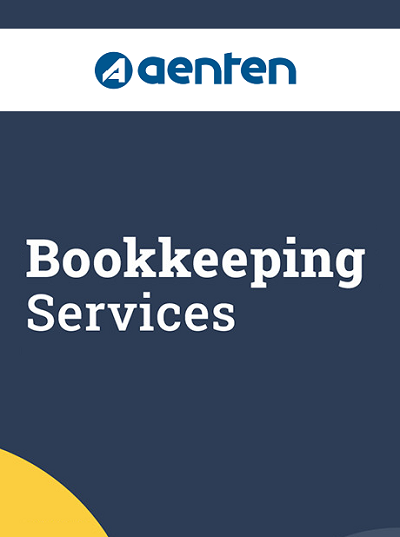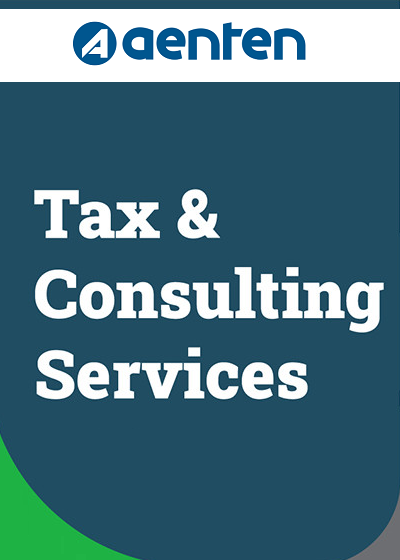In the world of business and freelancing, determining the right price for your services can be a daunting task. Pricing too high might scare away potential clients, while pricing too low might lead to burnout and financial instability. Striking the right balance is crucial for your business’s success, profitability, and longevity. In this comprehensive guide, we will delve deep into the art and science of pricing your services effectively.

Whether you’re a freelancer, consultant, small business owner, or a service provider, this guide will equip you with the knowledge and strategies to set prices that reflect your value, meet your financial goals, and satisfy your clients.
1. Introduction
Understanding the Importance of Pricing
Pricing is not just about putting a number on your services; it’s a strategic decision that can make or break your business. It affects your profitability, client perception, and overall success. Your pricing strategy should align with your business goals and value proposition. An effective pricing strategy can:
- Maximize Profits: By charging what your services are worth, you can increase your revenue and profitability.
- Attract the Right Clients: The price you set can attract clients who value your expertise and are willing to pay for it.
- Reflect Your Value: Pricing your services appropriately communicates your professionalism and the quality of your work.
- Support Growth: A well-thought-out pricing strategy can provide the financial resources needed for business growth and development.
- Ensure Sustainability: Pricing that covers your costs and provides a profit margin is essential for the long-term sustainability of your business.
The Psychological Aspect of Pricing
Pricing is not solely a matter of numbers; it also has a significant psychological component. Clients often associate price with value, quality, and trustworthiness. Understanding these psychological aspects of pricing can help you set prices that resonate with your target audience. We’ll explore these psychological factors throughout the guide to help you make informed pricing decisions.
2. Know Your Costs
Calculating Your Costs
Before you can determine your pricing strategy, you need a clear understanding of your costs. Your costs fall into two main categories: fixed costs and variable costs.
- Fixed Costs: These are costs that remain constant regardless of your level of production or service delivery. Examples include rent, insurance, and software subscriptions.
- Variable Costs: Variable costs fluctuate with your level of activity. For service providers, this often includes labor, materials, and other expenses directly tied to client work.
Calculating your total costs is a critical first step in setting your prices. You need to know how much money you must bring in to cover your expenses and make a profit.
The Importance of Profit Margins
Profit margins represent the portion of your revenue that remains as profit after covering your costs. Calculating and setting your desired profit margin is an essential aspect of pricing your services. Your profit margin determines how much you reinvest in your business, save for future growth, and pay yourself.
- Low Margin vs. High Margin: While a low-profit margin might attract more clients, it can limit your business’s ability to grow and invest in improvements. A higher profit margin allows for greater financial stability and flexibility.
- Market Norms: Research industry standards and competitor profit margins to gauge where your business falls in the market landscape.
- Adjustment Over Time: Profit margin goals can change as your business matures and evolves. Be prepared to adjust your margins as needed.
Avoiding Underpricing
Underpricing is a common mistake made by many service providers, especially those new to the business. Charging too little for your services not only undermines your profitability but can also send the wrong signal to clients. Here are some consequences of underpricing:
- Burnout: You may find yourself overworked as you take on more clients to compensate for low prices.
- Perceived Value: Clients may question the quality of your services if your prices are significantly lower than competitors.
- Stagnation: An inability to invest in your business or hire additional help can hinder your business’s growth.
- Client Expectations: Raising prices significantly after a period of underpricing can lead to client dissatisfaction.
- Industry Standards: Underpricing can hurt your industry as a whole by driving prices down and devaluing services.
Setting prices that cover your costs and provide a reasonable profit is essential for the long-term sustainability and growth of your business.
Read Also : How To Develop Pricing Strategies For Professional Services?
3. Market Research and Analysis
Understanding Market Dynamics
Effective pricing requires a solid understanding of your market. Market dynamics can vary widely depending on your industry, location, and target audience. Key factors to consider when analyzing your market include:
- Competitive Landscape: Who are your competitors, and how do they price their services? What sets you apart from them?
- Client Demographics: Understanding the characteristics of your target clients can help you tailor your pricing strategy to their needs and preferences.
- Market Trends: Stay informed about industry trends, emerging technologies, and shifts in client expectations that may affect pricing.
- Economic Conditions: Economic factors, such as inflation and economic downturns, can impact client budgets and willingness to pay for services.
A thorough understanding of your market will enable you to make informed pricing decisions and position your services effectively.
Competitive Analysis
Analyzing your competitors is a crucial step in determining your pricing strategy. Here’s how to conduct a competitive analysis:
- Identify Competitors: List your direct and indirect competitors in the market.
- Pricing Strategies: Examine the pricing strategies and models your competitors use. Are they offering hourly rates, project-based pricing, or value-based pricing?
- Service Offerings: Understand the range of services your competitors offer. Are there gaps in the market you can fill?
- Positioning: Assess how your competitors position themselves. Are they emphasizing expertise, affordability, or other unique selling points?
- Client Reviews: Read client reviews and testimonials to gauge client satisfaction and identify areas where you can differentiate yourself.
A competitive analysis helps you identify opportunities and gaps in the market that can inform your pricing and positioning strategy.
Identifying Your Target Market
Your pricing strategy should align with the needs and preferences of your target market. To identify your target market:
- Demographics: Consider factors such as age, gender, income level, and location.
- Psychographics: Understand the values, beliefs, and lifestyle of your ideal clients.
- Needs and Pain Points: Identify the problems and challenges your services can address.
- Behavior and Preferences: Determine where your target audience spends their time, both online and offline.
- Market Segmentation: Divide your market into segments with similar characteristics and tailor your pricing and marketing strategies to each segment.
Understanding your target market allows you to set prices that resonate with potential clients and address their specific needs.
4. Value Proposition and Positioning
Defining Your Value Proposition
Your value proposition is what sets you apart from competitors and defines the unique value you offer to clients. To define your value proposition, consider the following:
- What Makes You Unique?: Identify the qualities, expertise, or approaches that distinguish you from competitors.
- Client Benefits: What specific benefits do clients receive from your services? How do your services solve their problems or address their needs?
- Client Testimonials: If available, gather client testimonials that highlight the value and benefits they’ve experienced working with you.
- Competitive Advantage: How does your value proposition give you a competitive edge in the market?
Your value proposition should be a central element of your pricing strategy. It’s what justifies the prices you charge and communicates the value clients can expect to receive.
Positioning Your Services in the Market
Positioning involves how you present your services to your target market. Effective positioning not only communicates your value proposition but also influences how clients perceive your value. Consider the following positioning strategies:
- Expertise Positioning: Position yourself as an industry expert or specialist in a particular niche. Highlight your deep knowledge and experience in specific areas.
- Affordability Positioning: Emphasize competitive pricing and affordability if you aim to attract price-sensitive clients.
- Quality and Premium Positioning: If your services offer exceptional quality, premium features, or exclusivity, position yourself as a high-end provider.
- Convenience and Accessibility Positioning: Highlight the ease of doing business with you, quick response times, and accessibility.
- Client-Centric Positioning: Position your services around the unique needs and preferences of your clients. Show that you prioritize client satisfaction.
Effective positioning aligns with your value proposition and caters to the desires and expectations of your target market. It plays a crucial role in determining the perceived value of your services, which, in turn, affects your pricing strategy.
Read Also : 10 Easy Tips To Reduce Overhead Costs For Small Businesses
5. Pricing Strategies
Now that you’ve established a foundation of understanding your costs, analyzing the market, and defining your value proposition, it’s time to explore different pricing strategies. Each strategy has its advantages and disadvantages, and the choice depends on factors such as your industry, client expectations, and the nature of your services.
Hourly Rate Pricing
Hourly rates involve charging clients a set amount for each hour of work performed. This model is straightforward and widely used in industries such as legal services, consulting, and freelance work. When using hourly rates, consider factors like your desired hourly rate, the estimated number of hours required for a project, and the complexity of the work.
Pros:
- Transparency: Clients can see exactly how their money is being spent.
- Flexibility: Suitable for projects with uncertain timelines or changing scopes.
Cons:
- Income Limitation: Earning potential is capped by the number of billable hours.
- Client Concerns: Clients may be concerned about controlling costs and may perceive hourly billing as unpredictable.
Project-Based Pricing
Project-based pricing involves quoting a specific, predetermined fee for a project or service, regardless of the time spent. Clients know the total cost upfront, providing budget certainty. Fixed pricing is suitable for projects with well-defined scopes and deliverables.
Pros:
- Price Certainty: Clients appreciate knowing the total cost in advance.
- Incentive for Efficiency: Providers are motivated to complete the project efficiently.
Cons:
- Risk of Underestimation: Providers risk underestimating the effort required, leading to reduced profitability.
- Scope Changes: Scope changes can lead to disputes or additional charges.
Retainer Agreements
Retainer agreements involve clients paying a regular, recurring fee for ongoing access to specific services or expertise. This model is common in industries like marketing, legal, and consulting, where clients benefit from ongoing support and advice.
Pros:
- Predictable Revenue: Retainer agreements provide stable monthly income.
- Client Loyalty: Clients often value ongoing relationships and are less likely to seek alternatives.
Cons:
- Scope Expectations: Defining the scope of services within a retainer agreement can be challenging.
- Client Commitment: Clients may be hesitant to commit to long-term retainers.
Value-Based Pricing
Value-based pricing focuses on the value your services deliver to clients rather than the cost of providing them. It considers the impact of your services on a client’s business, such as revenue increase or cost savings. Value-based pricing requires a deep understanding of client needs and outcomes.
Pros:
- Aligns with Client Goals: Clients are willing to pay based on the value they receive.
- Potential for Higher Prices: Value-based pricing can lead to premium fees.
Cons:
- Complex Evaluation: Assessing the value of your services to each client can be challenging.
- Client Education: Clients may require education on the value-based pricing approach.
Choosing the right pricing model depends on your service offering, client base, and market dynamics. Many professional service providers use a combination of these models based on the nature of individual projects or client preferences.
Read Also : The Difference : Outsourced Accounting Vs. In-House Accounting
6. Cost-Plus Pricing vs. Value-Based Pricing
Pros and Cons of Each Approach
Cost-plus pricing and value-based pricing are two distinct approaches to setting prices for professional services. Each approach has its advantages and disadvantages:
Cost-Plus Pricing:
Pros:
- Transparency: Clients can easily understand the pricing method.
- Profit Assurance: It ensures a minimum level of profit for each project.
- Cost Recovery: All costs are recovered, ensuring financial sustainability.
Cons:
- Profit Limitation: Profit margins may be limited, especially if competitors offer similar services at lower prices.
- Value Ignored: The approach doesn’t consider the unique value your services provide to clients.
- Price Pressure: Clients may negotiate for lower prices, focusing on cost rather than value.
Value-Based Pricing:
Pros:
- Maximized Value: Prices are aligned with the perceived value your services deliver.
- Higher Margins: Value-based pricing can lead to higher profit margins.
- Client Focus: It emphasizes client outcomes and benefits.
Cons:
- Complexity: Implementing value-based pricing requires in-depth knowledge of client needs and market dynamics.
- Client Education: Clients may require education on the value-based approach.
- Potential Resistance: Some clients may resist value-based pricing if they are more accustomed to traditional pricing models.
When to Use Cost-Plus Pricing
Cost-plus pricing can be a suitable approach in the following scenarios:
- Commodity Services: When your services are similar to competitors and differentiation is primarily based on cost.
- Cost-Driven Industries: In industries where cost control is a primary concern, such as manufacturing or construction.
- Regulated Pricing: In situations where regulatory constraints limit pricing flexibility.
Cost-plus pricing provides a clear, transparent method for covering costs and ensuring a minimum level of profitability. However, it may not fully capture the value your services offer to clients.
Implementing Value-Based Pricing
Value-based pricing can be a powerful approach when:
- Unique Value: Your services provide unique and significant value to clients, leading to substantial benefits or outcomes.
- Client Understanding: Clients understand and appreciate the value your services bring to their business.
- Competitive Advantage: Value-based pricing can provide a competitive advantage by focusing on client outcomes rather than cost.
To implement value-based pricing successfully:
- Understand Client Needs: Gain a deep understanding of your clients’ needs, challenges, and goals.
- Quantify Value: Quantify the value your services bring to clients in terms of revenue increase, cost reduction, or other measurable outcomes.
- Communicate Value: Clearly communicate the value proposition to clients and align pricing with the perceived value.
- Educate Clients: Educate clients on the value-based pricing approach and how it benefits them.
- Provide Evidence: Use case studies, testimonials, and data to support the value-based pricing model.
- Continuously Monitor: Regularly assess the effectiveness of value-based pricing and make adjustments based on client feedback and market changes.
Value-based pricing can lead to higher profitability and stronger client relationships by aligning your pricing with the value your services provide.
7. Communicating Pricing to Clients
Transparent Pricing
Transparency in pricing is crucial for building trust with clients. When clients have a clear understanding of how you calculate your fees, they are more likely to feel confident in their purchasing decisions. To implement transparent pricing:
- Clearly outline your pricing structure, including any variables or factors that can affect costs.
- Provide detailed estimates or quotes for projects, clearly stating what is included and any potential additional charges.
- Communicate any pricing changes or updates to clients in advance.
- Be upfront about billing practices, including payment terms, invoicing frequency, and late fees.
Transparent pricing not only fosters trust but also reduces the likelihood of disputes or misunderstandings with clients.
Pricing Tiers and Packages
Pricing tiers and packages offer clients a range of options with different features and pricing levels. This approach allows clients to choose the option that best fits their needs and budget. For example, you can offer a basic package with essential services, a standard package with additional features, and a premium package with exclusive benefits.
Pricing tiers and packages provide several advantages:
- Cater to a broader range of clients with varying needs and budgets.
- Encourage clients to upgrade to higher-priced packages for additional value.
- Simplify the decision-making process for clients by presenting clear options.
When implementing pricing tiers and packages, clearly communicate the differences between each tier and emphasize the value clients receive at higher price points.
Handling Pricing Negotiations
Pricing negotiations are common in professional services, and how you handle them can impact client relationships and profitability. Consider the following tips for effective pricing negotiations:
- Understand Client Needs: Listen carefully to client concerns and needs. Understanding their priorities can help you find mutually beneficial solutions.
- Offer Options: Provide clients with alternative pricing options or packages that align with their budget and requirements.
- Highlight Value: Emphasize the value and benefits of your services when discussing pricing. Help clients see the return on investment they will receive.
- Stay Firm When Necessary: While flexibility is essential, be prepared to hold firm on pricing if it aligns with your costs and value proposition.
- Seek Win-Win Solutions: Look for solutions that benefit both you and the client. A successful negotiation should result in a positive outcome for both parties.
- Document Agreements: Once an agreement is reached, document the terms, pricing, and scope of work in a clear contract to avoid misunderstandings.
Effective negotiation skills can help you maintain client relationships while ensuring fair compensation for your services.
Read Also : The Business Structure : Corporations And Cooperatives.
8. Pricing Strategies for Different Types of Services
Pricing strategies can vary significantly depending on the type of professional services you offer. Here are pricing considerations and strategies for different service categories:
Legal Services
- Hourly Billing: Common in legal practice, but consider offering alternative fee structures like fixed fees for specific services.
- Retainer Agreements: Offer ongoing legal support for clients who require regular legal assistance.
- Value-Based Billing: Assess the potential financial impact of your legal services on the client’s case and use value-based pricing.
Consulting Services
- Hourly or Daily Rates: Common in consulting, but consider project-based pricing for well-defined projects.
- Retainer Agreements: For clients who need ongoing consulting expertise.
- Performance-Based Pricing: Tie fees to specific project outcomes or improvements.
Marketing Services
- Package Pricing: Offer marketing packages that include a mix of services like social media management, content creation, and SEO.
- Performance Metrics: Base pricing on key performance indicators (KPIs) such as lead generation or website traffic increase.
- Subscription Models: Provide monthly marketing subscriptions with tiered pricing based on services included.
Financial Services
- Assets Under Management (AUM): Charge a percentage of the client’s assets as fees for investment management services.
- Flat Fees: Offer financial planning services at a flat fee.
- Hourly Rates: For specific financial consultations or services.
Healthcare Services
- Insurance Billing: Accept insurance payments for medical services, but also offer transparent cash pricing for uninsured clients.
- Membership Models: Implement membership or concierge medicine models with monthly or annual fees.
- Package Pricing: Bundle services like annual check-ups and vaccinations into packages with discounted pricing.
Creative Services
- Project-Based Pricing: Charge a fixed fee for creative projects like graphic design, web development, or video production.
- Hourly Rates: For smaller tasks or consultations.
- License Fees: Consider licensing fees for the use of creative assets you produce.
IT Services
- Managed Services: Offer IT support on a subscription basis with tiered pricing based on services and response times.
- Project-Based Pricing: Charge a fixed fee for IT projects or system implementations.
- Hourly Rates: For ad hoc support or troubleshooting.
Each industry and service type may have unique pricing considerations, so it’s essential to research industry best practices and adapt your pricing strategy accordingly.
9. Case Studies and Real-World Examples
Successful Pricing Strategies in Professional Services
Examining real-world case studies of successful pricing strategies in professional services can provide valuable insights and inspiration. Here are a few examples:
1. Law Firm Case Study:
A law firm specializing in intellectual property law implemented a value-based pricing strategy for patent filings. Instead of billing based on hours spent, they assessed the potential value of the patent to the client’s business. This allowed them to charge higher fees for patents with higher commercial potential while offering more competitive rates for less valuable patents. The firm saw increased revenue and client satisfaction as a result.
2. Consulting Firm Case Study:
A management consulting firm shifted from hourly billing to project-based pricing for strategy development projects. They offered clients fixed-fee packages that included strategy formulation, implementation planning, and post-implementation evaluation. This approach provided clients with cost predictability and clarity on project scope, resulting in increased project engagements and client referrals.
3. Digital Marketing Agency Case Study:
A digital marketing agency specializing in e-commerce clients adopted a performance-based pricing model. They charged clients based on the actual sales generated through their marketing campaigns, taking a percentage of the revenue increase. This alignment of incentives led to significant growth in the agency’s client base and revenue.
These case studies demonstrate that innovative pricing strategies tailored to specific service offerings and client needs can lead to success in professional services.
Read Also : The 10 Benefits Of Cloud Accounting And Its Advantages
10. Monitoring and Adjusting Your Pricing
Key Performance Indicators (KPIs) for Pricing
Monitoring the effectiveness of your pricing strategies is essential for ongoing success. Key performance indicators (KPIs) can help you evaluate the performance of your pricing models and make necessary adjustments. Some relevant KPIs for pricing in professional services include:
- Profit Margin: Measure the profitability of your services by tracking profit margins over time.
- Client Acquisition Cost: Calculate how much it costs to acquire a new client compared to the revenue generated from that client.
- Client Retention Rate: Monitor the percentage of clients who continue to engage your services over time.
- Average Revenue per Client: Track the average amount of revenue generated from each client relationship.
- Pricing Disputes: Monitor the frequency and resolution of pricing disputes with clients.
- Client Feedback: Collect and analyze client feedback related to pricing satisfaction and perceived value.
When and How to Adjust Pricing
Adjusting pricing is a proactive response to changes in market conditions, client feedback, or shifts in your business model. Here are some scenarios that may trigger pricing adjustments:
- Competitive Pressure: If competitors offer similar services at lower prices, you may need to reevaluate your pricing strategy.
- Cost Changes: Significant changes in your cost structure may necessitate pricing adjustments to maintain profitability.
- Market Trends: If market trends indicate shifting client preferences or expectations, consider adapting your pricing accordingly.
- Client Feedback: Pay attention to client feedback regarding pricing. If clients consistently express dissatisfaction with pricing, it may be time for changes.
- New Service Offerings: Introducing new services or packages may require adjustments to your existing pricing models.
When adjusting pricing, consider the potential impact on existing clients and communicate changes transparently. Be prepared to provide value justifications for any price increases.
Responding to Market Changes
Market changes are inevitable, and your pricing strategies should remain adaptable. Here are strategies for responding to common market changes:
- Price Increases: When increasing prices, emphasize the added value or improvements clients will receive. Offer tiered pricing options to minimize the impact on existing clients.
- Price Decreases: If market conditions necessitate lower prices, focus on efficiency gains or cost reductions that allow you to maintain profitability.
- New Market Segments: Explore new client segments or niches that may have different pricing expectations.
- Technology Advances: Leverage technological advancements to streamline service delivery and potentially reduce costs.
- Regulatory Changes: Stay informed about industry regulations that may impact pricing practices and ensure compliance.
By staying attuned to market changes and being willing to adjust your pricing strategies, you can continue to thrive in the ever-evolving landscape of professional services.
Note : Aenten offer Bookkeeping Services, Payroll Services, CFO Services, Tax Preparation Services, for entrepreneur, startups and businesses.
Conclusion
Developing effective pricing strategies for professional services is a complex yet crucial endeavor for sustainable growth and profitability. Your pricing decisions impact your revenue, client relationships, and market positioning.
In this guide, we’ve explored the key steps and considerations involved in pricing professional services:
- Analyzing Costs: Understand your costs, calculate breakeven points, and set profit margins.
- Market Research and Analysis: Know your target market, study competitors, and stay informed about market trends.
- Value Proposition and Positioning: Define your unique selling proposition (USP) and position your services effectively.
- Pricing Models: Explore various pricing models, including hourly rates, fixed pricing, retainers, project-based pricing, and value-based pricing.
- Communication: Be transparent about pricing, offer pricing tiers and packages, and handle pricing negotiations effectively.
- Industry-Specific Strategies: Adapt your pricing strategies to the unique characteristics of your industry.
- Real-World Examples: Learn from successful case studies and examples of innovative pricing strategies.
- Monitoring and Adjustment: Use KPIs to evaluate pricing performance and make adjustments as needed.
- Responding to Market Changes: Stay agile and responsive to market shifts, technology advancements, and regulatory changes.
As a professional service provider, your pricing strategies should reflect your expertise, value proposition, and commitment to delivering exceptional service to your clients. By continuously refining and adapting your pricing approaches, you can navigate challenges, seize opportunities, and achieve long-term success in the competitive landscape of professional services.





